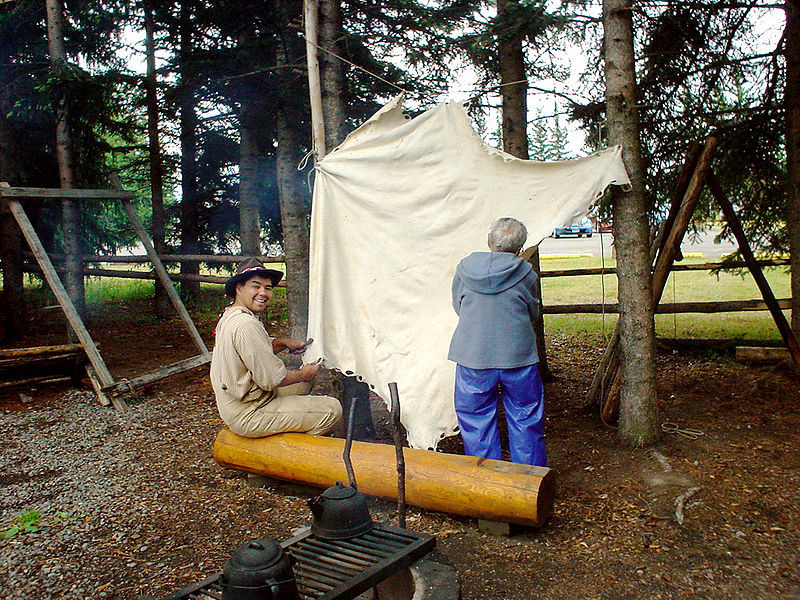Chestnut Oak : Usage In Culture

The bio-molecue tannin gave great value to the Chestnut Oak as the tanning of hides was essential to the success of pre-industrial North-American cultures. This picture here shows the tanning of a moose hide. (John Bromley, July 2008)
Usage In Culture
Like most Oaks, the wood of the Chestnut Oak is very hard and sturdy, making it ideal for furniture, cabinets, fence posts, railroad ties, and many other wood products. However, due to its slightly smaller size compared to other Oaks, it is not as favored in the lumber industry. Though it is still harvested and sold as white Oak or “mixed white Oak”, it is deemed to be of an inferior quality to most other oak species’.
As mentioned before, the bark contains a particularly high concentration of tannic acid, which has been used by scores of generations to turn deer hide into leather for the making of many indispensable objects such as clothing, footwear, baskets, pouches etc. Though traditional tanneries have not been “glorified” to the same extent as blacksmith shops and the town square, they played an integral role in the operation of any classic civilization, being “as necessary to the community as any of our modern services of today” (Eastman, p.1). Last but not least, the tough, hard wood that serves as the body and the bones of the Chestnut Oak makes for an excellent chunk of firewood/fuel due to its density, as well as a reliable, sturdy board for wood floors due to its excellent strength and durability.
